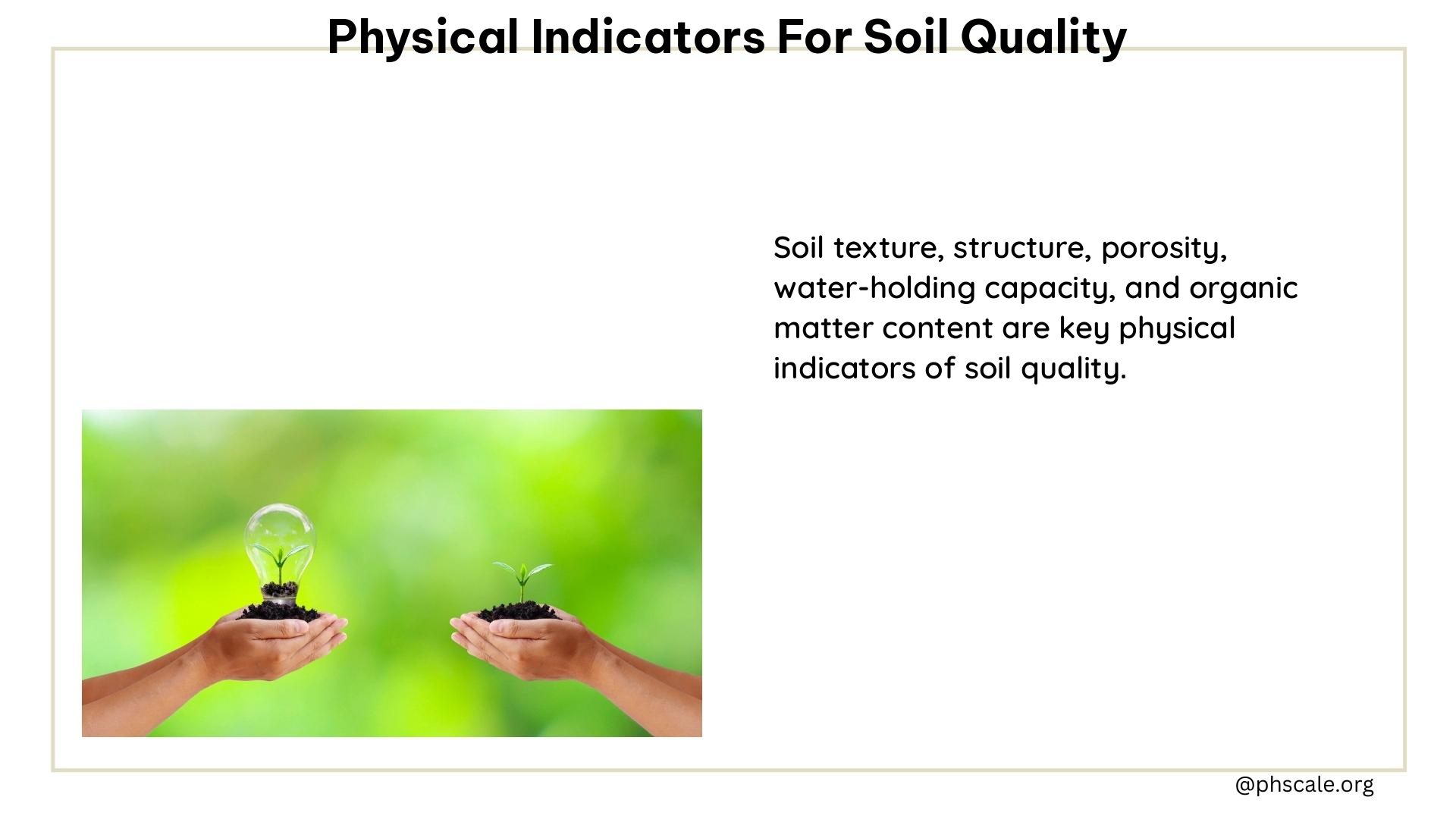Physical indicators for soil quality are crucial for assessing the overall health and functionality of the soil. These indicators provide information about the soil’s hydrologic characteristics, physical stability, and ability to support plant growth and withstand physical forces. Understanding and measuring these indicators can help farmers, land managers, and researchers optimize soil management practices and improve soil productivity.
Key Physical Indicators of Soil Quality
Aggregate Stability
Aggregate stability measures the ability of soil aggregates to resist breakdown under various forces, such as water or mechanical stress. It is crucial for maintaining soil structure and preventing erosion.
Available Water Capacity
Available water capacity measures the amount of water that can be held in the soil for plant use. It is essential for plant growth and productivity.
Bulk Density
Bulk density measures the mass per unit volume of soil. It affects the soil’s ability to support plant growth, water infiltration, and aeration.
Infiltration
Infiltration measures the rate at which water enters the soil. It is critical for preventing runoff and ensuring that plants receive adequate water.
Slaking
Slaking measures the breakdown of soil aggregates when exposed to water. It is related to soil structure and erosion resistance.
Soil Crusts
Soil crusts measure the formation of surface crusts that can impede water infiltration and plant growth.
Soil Structure and Macropores
Soil structure and macropores measure the arrangement of soil particles and the presence of large pores, which affect water flow, aeration, and root growth.
Measuring Soil Physical Properties

Soil Function-Indicator Matrix
The soil function-indicator matrix helps select appropriate indicators for assessing specific soil functions. It reveals the relationship between physical indicators and soil functions, maximizing the usefulness of collected data.
Bulk Density Measurements
Bulk density measurements can be taken for various layers through the soil profile to establish trends and compare them to reference values based on soil texture.
Infiltration Tests
Infiltration tests measure the rate at which water enters the soil, providing insights into the soil’s hydrologic characteristics.
Importance of Physical Indicators
Physical indicators are essential for evaluating soil quality because they directly affect plant growth, water availability, and soil stability. They are also sensitive to management practices and natural disturbances, making them useful for monitoring changes in soil quality over time.
References
- USDA Natural Resources Conservation Service. (2015). Soil Quality Indicators. Retrieved from https://www.nrcs.usda.gov/sites/default/files/2022-10/chemical_indicators_overview.pdf
- Sciencedirect. (2002). Indicators of good soil physical quality: density and storage. Retrieved from https://www.sciencedirect.com/science/article/pii/S0016706102002288
- Irrigation Toolbox. (2008). Soil Quality Physical Indicators. Retrieved from https://irrigationtoolbox.com/IrrigationToolBox/Section1_SoilWaterPlantRelationships/SoilQuality/sq_tn_10.pdf
- Soil Quality. (n.d.). Indicators. Retrieved from http://soilquality.org/indicators.html.
